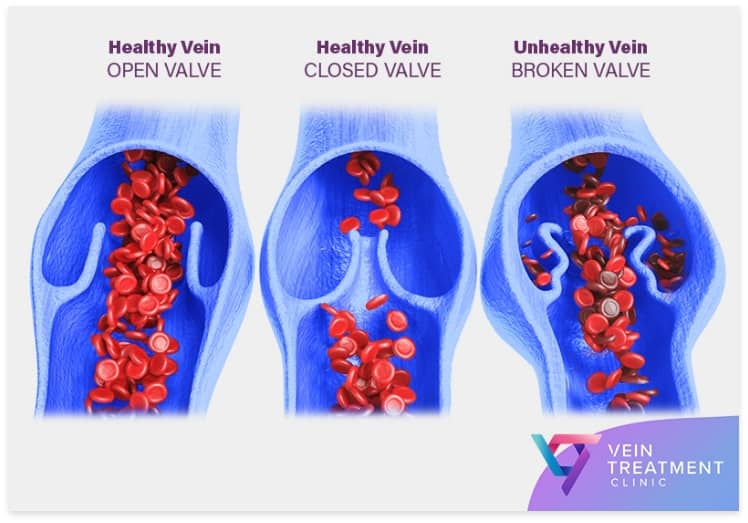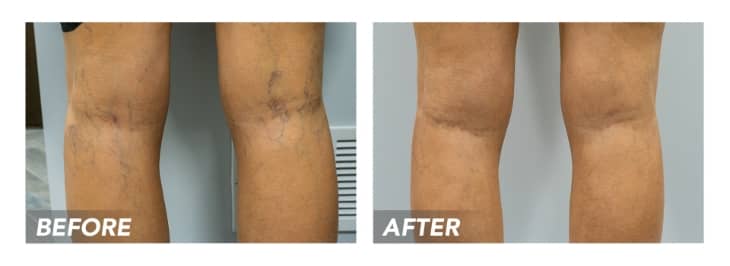What is EVLA?
Endovenous laser ablation is one of the most effective minimally invasive treatments for chronic venous insufficiency and varicose veins. Venous insufficiency is a medical condition wherein the collapse of your vein valves leads to the accumulation of blood in your leg veins and the eventual formation of spider veins and varicose veins.
Endovenous laser ablation involves channeling laser energy into the diseased vein via a catheter, making it collapse and get absorbed by the body. The accumulated blood reroutes into healthier leg veins, restoring optimal blood circulation to the heart. The entire procedure concludes within 30 minutes, following which you can resume your normal activities.
How Does EVLA Work?
During the EVLA procedure, your vein doctor will apply local anesthesia on a small part of your leg and make a small incision. The incision will serve as an entry point for a tube-like catheter that’s inserted into the diseased saphenous vein under ultrasound guidance. The hollow needle will be threaded with a wire and a sheath, which will be passed over the unhealthy vein.
Once the laser fiber is lodged in place, the vein doctor will apply tumescent anesthesia to protect the surrounding tissues from the laser energy. The laser fiber will be activated to generate laser energy, which will induce an inflammatory reaction and seal the vein closed. Over time, the diseased saphenous vein will be reabsorbed by the body.

Is EVLA Safe and Effective?
Minimally invasive vein treatments, such as endovenous laser ablation, have nearly perfect success rates exceeding 90%. Furthermore, the EVLA procedure is performed with one small incision rather than multiple excisions, so there’s no hospitalization or post-treatment downtime. This procedure is also safer than vascular surgery with a negligible risk of complications or recurrent vein disease. Long-term studies have shown that endovenous laser ablation is extremely safe and effective.

What are the Side Effects of EVLA?
The following are the potential side effects of endovenous laser ablation:
- Mild and temporary bruising
- Mild and temporary stiffness
- Mild and temporary soreness
- Mild and temporary numbness
- Recurrence of vein disease (very rare)
- Infections (very rare)
- Deep vein thrombosis (very rare)
What are the Pros and Cons of EVLA?
Pros of EVLA
- Minimal post-treatment discomfort
- Negligible risk of complications
- No risk of skin discoloration
- Immediate resumption of daily activities
- Concludes within an hour
- No scars and marks
Cons of EVLA
- Performed with needles
- More uncomfortable than radiofrequency ablation
- You must avoid heavy exercise for a week
Try our FREE Health Insurance Coverage Checker by filling out this form:

Contact us
Contact Us
Please talk to our team members for more information on insurance coverage. You can talk to them directly by calling one of our vein centers in California: (858) 988-6685
Book Online
You can schedule an appointment online via our official website. We provide free insurance verification before your appointment.